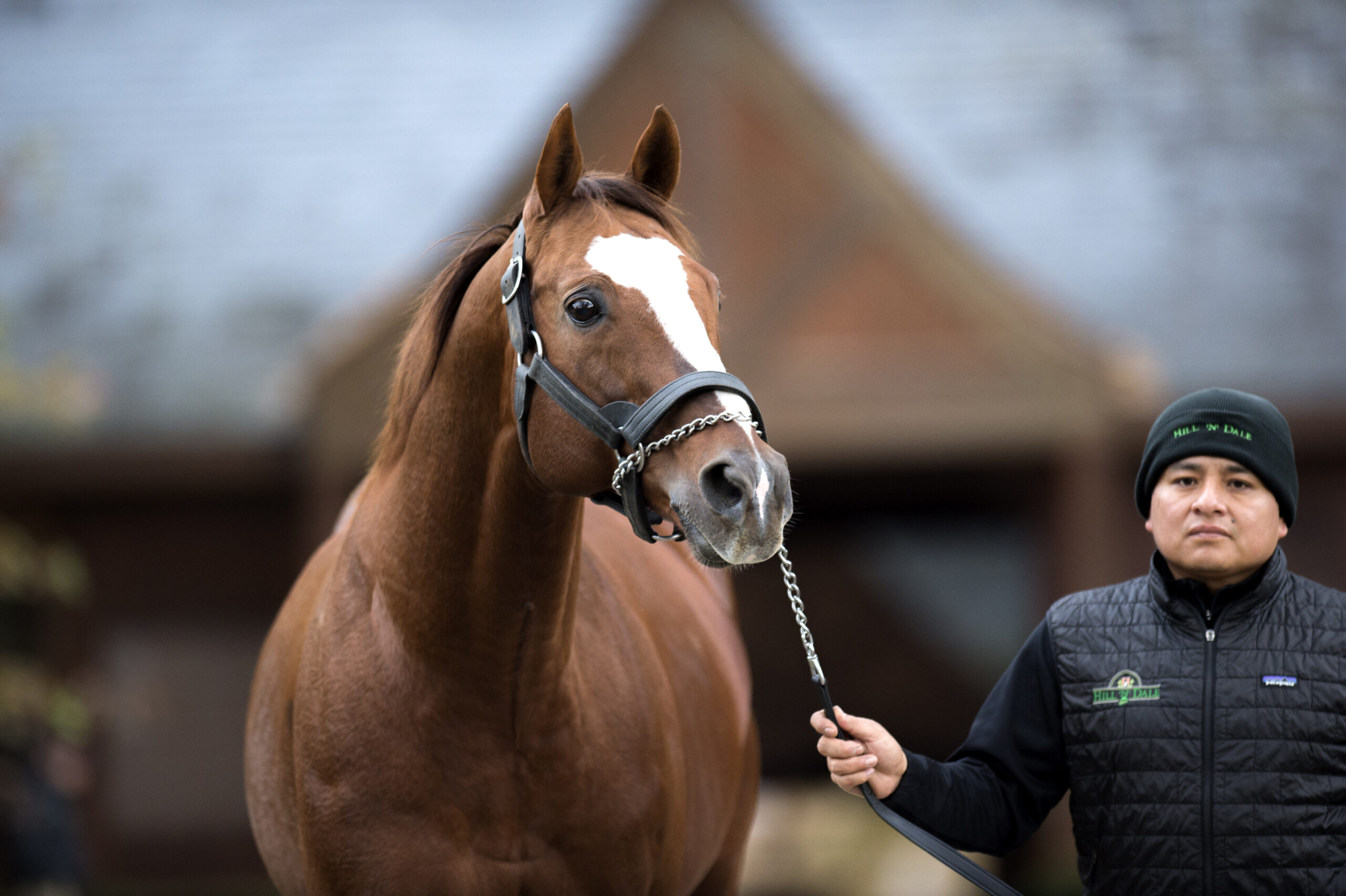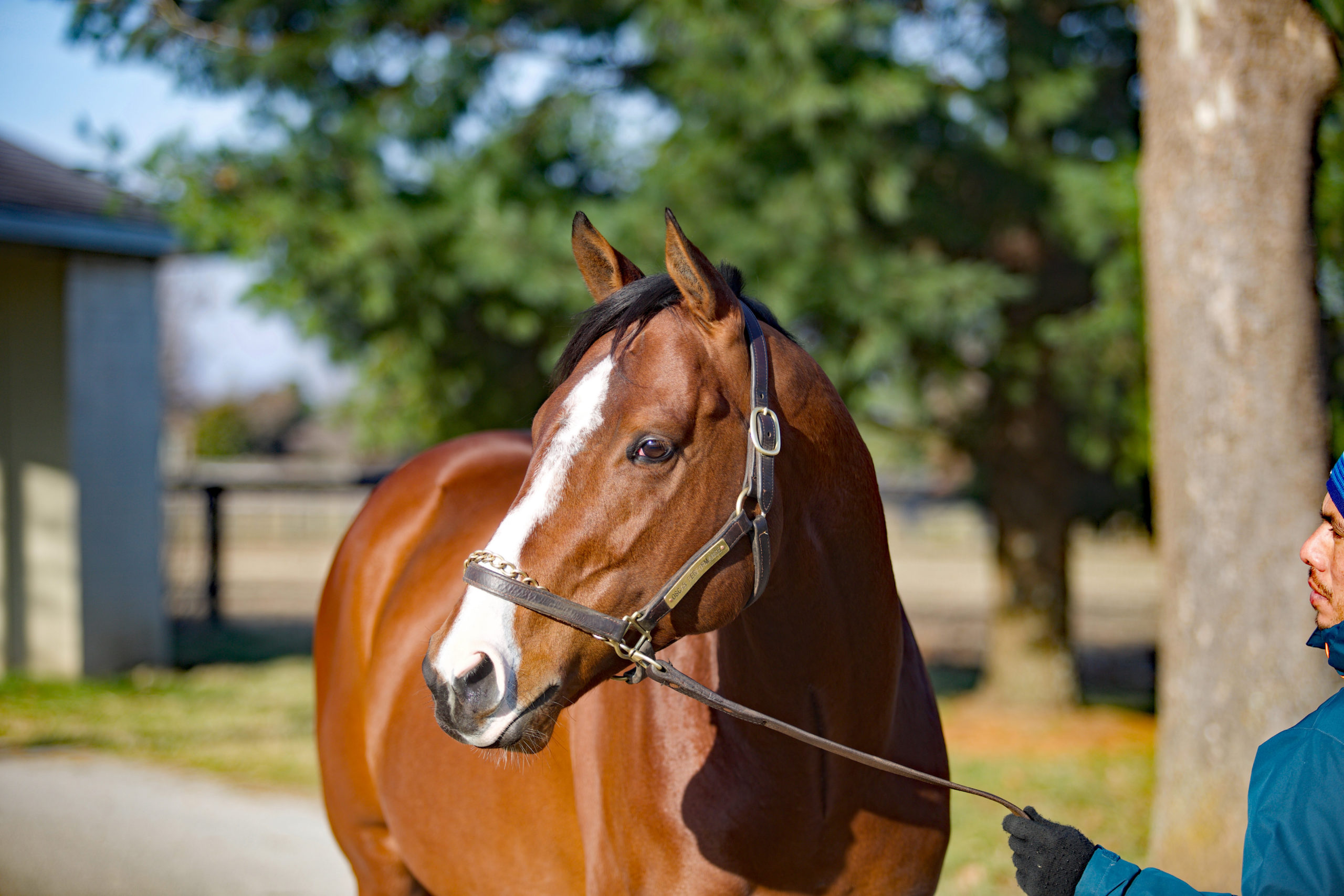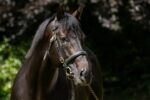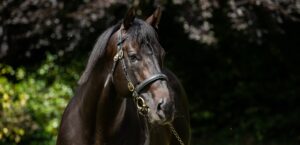When Kitten’s Joy retired to Ramsey Farm in Kentucky in 2006, his owner-breeders Ken and Sarah Ramsey could stand behind a homebred who was an Eclipse Award-winning champion and earner of close to $2.1 million. Not long earlier, the owners had been in the enviable position of having two proper Grade 1 colts at their disposal but having weighed up their options, they decided to sell their Dubai World Cup winner Roses In May to Japanese interests and bring Kitten’s Joy into the fold as a house stallion. As Ken Ramsey outlined to Owner Breeder magazine in the summer of 2020, the funds from that deal allowed him to invest heavily in the ‘Kitten’s Joy project’.
Except that outside breeders failed to share his enthusiasm. Despite winning a pair of Grade 1 races, the Secretariat Stakes and Joe Hirsch Turf Classic Invitational Stakes, Kitten’s Joy was a grass horse through and through. It is that kind of profile that even today, in an era where US turf racing offers greater financial rewards, fails to resonate with the every-day American breeder. Thus it was more or less left to Ramsey to make his own stallion, which as history relates he did to great effect. The Ramseys went on to breed each of Kitten’s Joy’s first 16 stakes winners and well over half of his 118 to date overall. They include Real Solution, Big Blue Kitten and Admiral Kitten, who between them won the Grade 1 Arlington Million, Sword Dancer and Secretariat Stakes during single afternoon in August 2013, as well as the Breeders’ Cup winners Bobby’s Kitten and Stephanie’s Kitten.
Outside breeders steadily latched on and by the time Kitten’s Joy’s fee had hit $100,000 in 2014 following his first North American sires’ championship (he was champion sire again in 2018), the horse had secured support from the late Queen, Aga Khan, Niarchos family and Juddmonte Farms.
Kitten’s Joy became one of those rare horses to transcend North America and Europe
He has also been a particular friend to Qatar Racing, the owner of two of his best European sons in Roaring Lion and Kameko. In fact, as Kitten’s Joy became one of those rare horses to transcend North America and Europe, there was a move to stand the horse in Newmarket. However, that didn’t come to fruition, with the horse switching in later years to John Sikura’s Hill ’n’ Dale Farm in Kentucky, where he stood for six seasons until his death at the age of 21 in 2022.

Kitten’s Joy. Photo – George Selwyn
Kitten’s Joy had a number of sons at stud by that stage yet there remained a question mark over how his legacy would evolve. Several of his earlier – and more cheaply-bred sons – failed to cut much ice with their runners, among them Big Blue Kitten and Real Solution, both of whom had their chance in Kentucky. The high-class miler Taareef failed to make much impact in France while Godolphin’s Eclipse Stakes winner Hawkbill was sent by Darley to stand in Japan following a single low-key season in Newmarket. That small first British-bred crop of 25 foals has yielded a handful of minor winners and his Japanese runners haven’t yet done enough for him to sit within the top ten second-crop sires in Japan.
His first yearlings were well liked.
The waters were muddied, of course, by the early death of Roaring Lion. The popular grey left behind 106 foals in his sole crop sired at Tweenhills Farm and Stud. Bred off a fee of £40,000, they are a naturally well-bred group and include a Group 1 scorer in Dubai Mile, the tenacious Criterium de Saint-Cloud winner, among five stakes winners. With Dubai Mile’s retirement to Manton Park Stallions, the line has been afforded an opportunity to take root. Meanwhile on the track, there should be more to come from Group 3 winner Embesto and the John and Thady Gosden-trained Lion’s Pride, a well-regarded colt who signed off his year with a win in the Floodlit Stakes at Kempton.
There must be some solace for the team at Tweenhills in that they at least have another top-class son, Kameko, to look forward to. Winner of the Vertem Futurity at two and 2,000 Guineas at three, he has over 80 two-year-olds to run for him this year, including six with his former trainer Andrew Balding. His first yearlings averaged close to 60,000gns at the sales last year, so were well liked.
Bobby’s Kitten, the first son of Kitten’s Joy to stud in Britain, has also served his base of Lanwades Stud well as the sire of Kirsten Rausing’s homebred Sandrine, the winner of three Group 2 races at ages two to four. He also has a top Saudi Arabian three-year-old in Almotahed.
The current situation as far as the Kentucky landscape is concerned is developing all the time, and in a positive light. Multiple Grade 1 winner Oscar Performance retired to Mill Ridge Farm with the weight of an influential syndicate behind him and is now rewarding those supporters with a series of smart winners. Then there is Divisidero, another tough customer who is making light of being disregarded by the market to become a multiple stakes-producing sire.
Oscar Performance’s profile was interesting in that he ran free of Lasix in a career highlighted by wins in the Grade 1 Breeders’ Cup Juvenile Turf, Belmont Derby Invitational, Secretariat Stakes and Woodbine Mile. He retired to stud in 2019 and was launched with the assistance of an impressive syndicate that included his breeders John and Jerry Amerman, George Strawbridge, the Coolmore-affiliated Orpendale and Mike Ryan.
The Kitten’s Joy line has understandably been pigeon-holed as turf blood. However, Oscar Performance has demonstrated a valuable versatility to date. So far, he has sired seven stakes winners, five of whom are from his 88-strong first crop. They are led by the accomplished dirt filly Red Carpet Ready, last year’s Grade 2 Eight Belles Stakes winner who recently captured the Grade 3 Hurricane Bertie Stakes at Gulfstream Park. Another four-year-old Tumbarumba also won the Grade 3 Fred W. Hooper Stakes on the Gulfstream dirt prior to being touched off in the Grade 2 Gulfstream Park Mile.
Meanwhile, his second crop of 91 are starting to his full stride. Sitting at the top of the pile is Endlessly, a dual Grade 3-winning two-year-old who recently dominated the Grade 3 Jeff Ruby Steaks on Tapeta. That race is a noted Kentucky Derby prep, and while Endlessly is on course for the Louisville Classic, he is also extremely effective on turf, the same surface that has seen the stallion’s Grade 2 scorer Andthewinneris to best effect.
Oscar Performance covered a career-high of 160 mares at $20,000 last year, so the market has taken note. However, it has been much harder going for Airdrie Stud’s Divisidero, despite a race record underpinned by durability and class.
From the influential Cosmah family and inbred to Sadler’s Wells, Divisidero won seven races over five seasons including the Grade 1 Churchill Downs Turf Classic. But as is so often the case, that turf profile failed to help him. Installed at a fee of $7,500 at Airdrie Stud in Kentucky, he covered just 35 mares in his first season, which resulted in a crop of 28 foals. Yet of the 13 to have run to date, two are stakes winners starting with Vote No, who got the ball rolling last year as winner of the Listed Kentucky Downs Juvenile Sprint Stakes and Listed Turfway Prevue Stakes. Last month he was joined by Abrumar, winner of a Listed prize at Gulfstream Park.
Divisidero’s subsequent figures will continue to make it hard for him to gain traction; he has just 15 two-year-olds, 12 yearlings and covered 11 mares in 2023. But Airdrie can at least stand behind him as an emerging conduit of class. Given his turf profile, he deserves to appeal as a value Kentucky option to a European audience.
Closer to home, it will be interesting to see how Kameko fares. Having been given every opportunity, it would be no surprise to see him establish a further foothold for this hard-knocking sire line.

Oscar Performance: has got off to a strong start at Mill Ridge – Photo: Lucas Marquardt
Diversity is key
‘Polarised’ never seems to be far from a conversation regarding the Flat market nowadays but if anyone thought that particular side was bad, then they haven’t looked at the jumps sector. There it really is about sire power yet only concentrated across a small handful of acceptable names, notably Blue Bresil and Walk In The Park. Last year’s Tattersalls Ireland National Hunt November Sale provided an eye-watering insight; of the 42 foals to make €50,000 or more, 17 were by Blue Bresil while 13, including the top €100,000 foal, were by Walk In The Park. Only the French veteran Kapgarde and Flat-orientated Nathaniel broke the stranglehold within the top 12.
It is understandable that breeders should follow the fashion, especially when it involves two such elite – and elderly – stallions. Walk In The Park has been a buzz name since his arrival in 2016 to Grange Stud for Coolmore, a move prompted by some exceptional results from limited opportunities during his time in France. The son of Montjeu is now 22 and even though he has covered north of 190 mares in each of the past two seasons, breeders will be aware that he won’t be around forever. Blue Bresil is slightly younger at 18 and while he has little to prove, notably as the sire of Constitution Hill, his supporters will be banking on some high-profile results emerging out of his Glenview Stud-sired crops, all of which possess a depth of quality that should enhance his place as a force to be reckoned with.
Still, you don’t have to be Einstein to work out that this infatuation with such a small pool of stallions isn’t healthy for the market. Good stallions can emerge from anywhere, even allowing for lack of opportunity – Walk In The Park, who once stood as low as €1,500, being a case in point.
It was well publicised this time last year that no fewer than 27 individual stallions were represented by winners at the 2023 Cheltenham Festival. And the situation was pretty similar last month where 21 stallions were on the board. The irony is that the best of them, Gold Cup hero Galopin Des Champs, is by arguably the most obscure stallion of them all in Timos, a Group-placed son of Sholokhov who was residing in Libya at the time of his death around two years ago.
French-based stallions were never far from the action this year
As ever, French-based stallions were never far from the action this year. They included the Haras d’Etreham veteran Saint Des Saints, who fired in three winners in Protektorat (Ryanair Chase), Montmiral (Pertemps Network Final Handicap Hurdle) and Sine Nomine (St. James’s Place Festival Challenge Cup Open Hunters’ Chase). Etreham also handles Marked Marvel, sire of Stayers’ Hurdle winner Teahupoo, at Haras de la Tuilerie and formerly stood the admirably versatile Poliglote, who added another Festival winner to his record in the Brown Advisory Novices’ Chase scorer Fact To File.
Rarely also does a big meeting go by without Haras du Mesnil’s Doctor Dino exerting some kind of influence and he was once again in the thick of the action thanks to State Man’s no-nonsense win in the Champion Hurdle. Similar comments apply to Great Pretender, sire of the easy Close Brothers Mares’ Hurdle winner Lossiemouth.
Martinborough, the first son of Deep Impact to stud in Europe, is also likely to be on the radar of British and Irish interests thanks to the Triumph Hurdle winner Majborough. Martinborough was introduced to a French audience by Haras de Grandcamp and now stands at Haras de la Baie for €3,000.
The spread of winning sires also included a popular winner for Overbury Stud’s Golden Horn in Golden Ace, a Flat-bred filly who lowered the colours of Brighterdaysahead in the Ryanair Mares’ Novices’ Hurdle for trainer Jeremy Scott. Telescope, meanwhile, broke through with a first Grade 1 winner thanks to Slade Steel, successful in the Supreme Novices’ Hurdle.

If the Festival results taught us anything, however, then surely it is disregard the influence of Alleged at your peril. The sire line has come to an end following the deaths of the last of the Alleged sire sons, Flemensfirth and Shantou, but for now it remains extremely well represented on the track. Flemensfirth tied Saint Des Saints by number of winners on three, namely Ballyburn (left – Gallagher Novices’ Hurdle), Grey Dawning (Turner Novices’ Chase) and Shakem Up’Harry (TrustATrader Plate Handicap) while Shantou was represented by Chianti Classico and Stellar Story, successful in the Ultima Handicap Chase and Albert Bartlett Novices’ Hurdle. Alleged was a notoriously difficult horse and its generally agreed that the hard-headedness that he invariably imparted stood his sons in good stead when it came to producing jumps stock.
As for Walk In The Park, he got on to the scoresheet thanks to the siblings Inothewayurthinkin (Fulke Walwyn Kim Muir Challenge Cup Amateur Jockeys’ Handicap Chase) and Limerick Lace (Mrs Paddy Power Mares’ Chase), both bred by Noreen McManus out of the Califet mare Sway.
In all, the Cheltenham Festival provided further proof, if any were needed, of the gulf between the racecourse and sales ring. Will if affect the market? Probably not. But it may at least give some encouragement to those breeders looking away from breeding to the big names.



